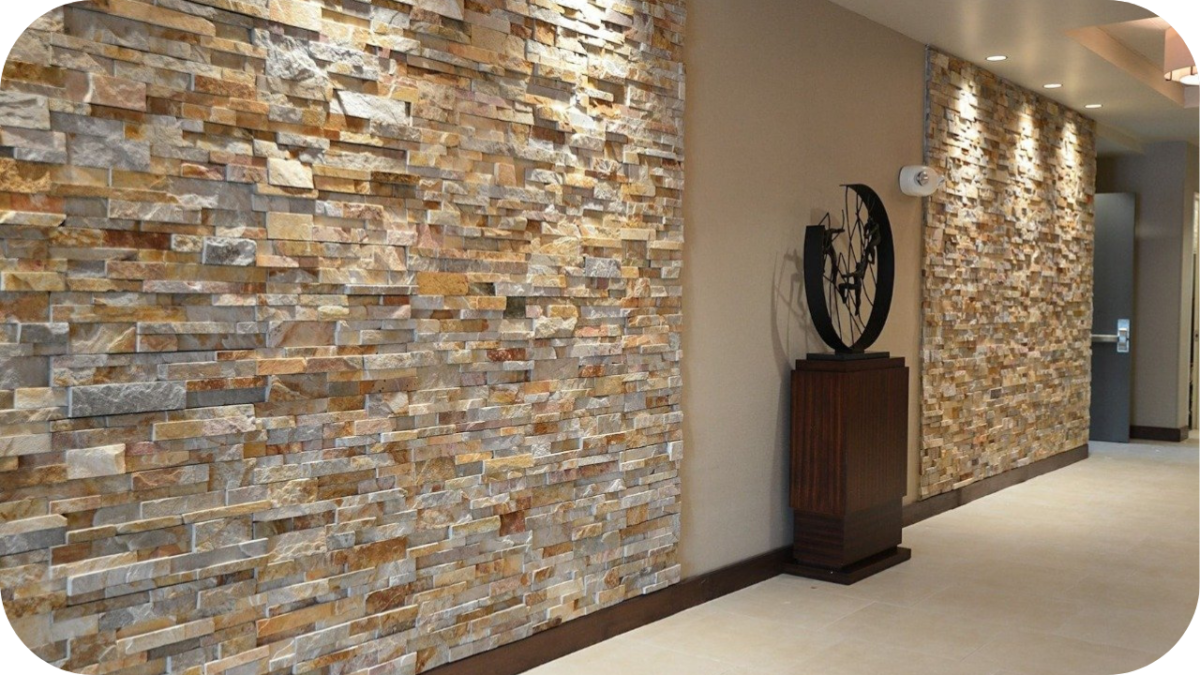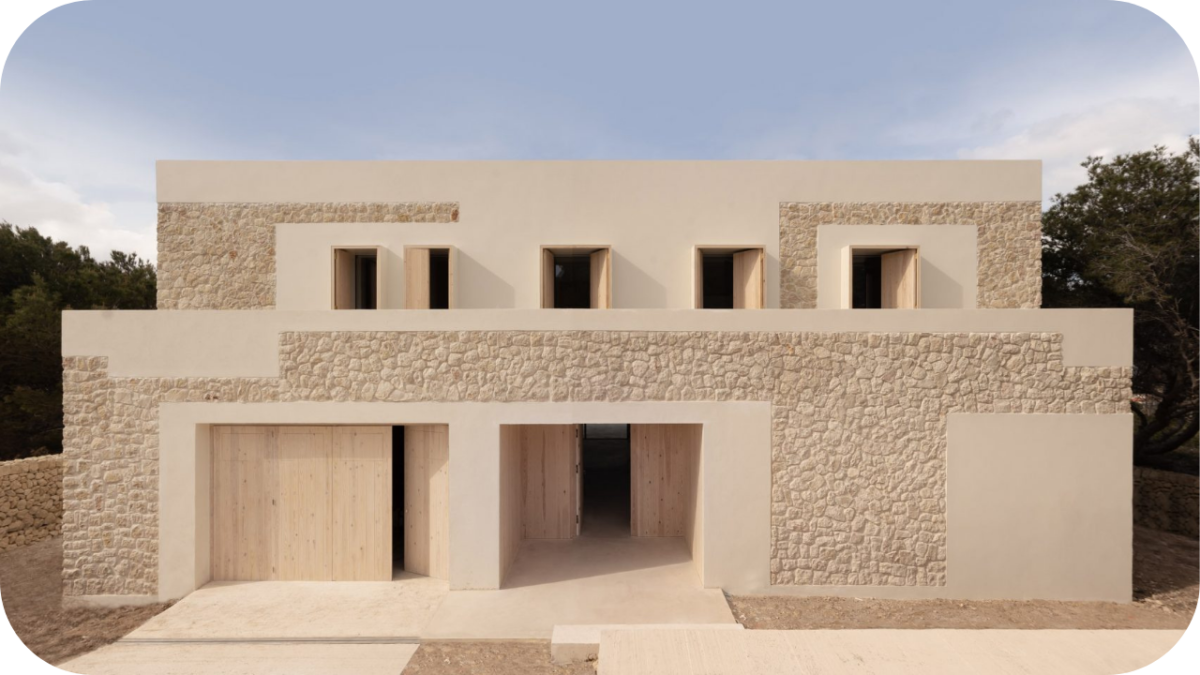Luxury Stone Wall Cladding for Contemporary Facades
A striking facade sets the tone for any architectural masterpiece, and luxury stone wall cladding redefines modern aesthetics. With its seamless blend of natural elegance and durability, stone cladding has become a go-to choice for architects and designers aiming for a high-end finish.
From sleek, minimalist exteriors to bold, textured statement walls, luxury stone cladding brings versatility, sophistication, and an undeniable prestige.
But why do architects and designers swear by it? Keep reading to understand the defining features, trending materials, and the transformative power of stone cladding for modern facades.
1. Travertine Cladding
Travertine cladding brings a refined, natural elegance to contemporary facades. This luxurious limestone variant is known for its warm, earthy tones, unique pitted texture, and soft, organic feel.
Architects favour travertine because it can create seamless, sophisticated exteriors that complement modern and classic designs.
Available in honed, polished, or tumbled finishes, travertine offers versatility while maintaining its signature understated charm. It’s also breathable, making it ideal for climates with fluctuating temperatures.
However, proper sealing is essential to prevent moisture absorption and maintain its pristine look over time.
2. Limestone Cladding
Limestone cladding exudes timeless appeal with soft, neutral tones that blend effortlessly into contemporary architecture. Whether used for sleek, minimalist facades or textured, rustic exteriors, limestone enhances the natural beauty of any structure.
Its fine-grain composition and subtle veining create a refined yet organic aesthetic, perfect for modern homes and commercial buildings. While durable, limestone is relatively porous and requires sealing to prevent water infiltration.
When properly maintained, it weathers beautifully over time, developing a natural patina that enhances its character. Architects appreciate its lightweight nature, which makes installing it easier than heavier stone options.
3. Granite Cladding
Granite cladding is an exceptional choice for those seeking unmatched durability and a bold, high-end finish. Known for its dense composition and resistance to weathering, granite maintains its polished or flamed surface even under extreme conditions.
It suits a wide range of contemporary designs and is available in various colours and finishes, from sleek black and deep greys to lighter, speckled tones. Its low maintenance requirements and high resistance to scratches and stains make it a practical option for luxury facades.
While heavier than other cladding materials, proper installation ensures longevity, making it a solid investment in residential and commercial projects.
4. Marble Cladding
Marble cladding is synonymous with luxury and sophistication. Its striking veining and opulent finish elevate any facade. M marble is commonly used in high-end residential and commercial properties, adding grandeur and exclusivity.
Its natural variations in colour and pattern make every installation unique, whether opting for classic white Carrara, dramatic black Marquina, or warm beige tones. While stunning, marble requires regular sealing and maintenance to protect against weathering and stains.
Despite being a softer stone, advancements in surface treatments have made it more resilient, ensuring its timeless appeal lasts for decades.
5. Bluestone Cladding
Bluestone cladding offers a bold, contemporary aesthetic, perfect for modern facades that demand presence and durability. Its rich blue-grey hues and natural cleft texture contrast sharply against glass, timber, or metal elements in contemporary designs.
Bluestone is particularly favoured for its strength in weather resistance and adaptability to various architectural styles. Available in smooth, honed finishes or rough, split-faced textures, it adds depth and character to exteriors.
While highly durable, sealing is recommended to prevent weathering and enhance its deep, dramatic tones over time. Bluestone’s low-maintenance nature makes it a practical yet stylish choice for luxury projects.
6. Quartzite Cladding
Quartzite cladding is the ultimate blend of strength and natural beauty, making it a top choice for luxury facades. Its high quartz content makes it almost crystalline, offering a refined yet robust aesthetic.
Quartzite, available in soft whites, greys, and golden tones, enhances minimalist and bold architectural styles. Unlike marble, it is highly resistant to etching and staining, making it the ideal stone for exterior applications. Its non-porous surface ensures long-term durability without the need for excessive maintenance.
As one of the hardest natural stones, quartzite withstands harsh weather while maintaining its exquisite appearance, making it a premium option for contemporary exteriors.
7. Slate Cladding
Slate cladding introduces a textured, natural finish that enhances the modern appeal of luxury facades. Its deep charcoal, grey, and green shades give contemporary structures an earthy yet refined look.
Architects prefer slate for its natural split-face texture, which adds depth and movement to exterior walls. Beyond aesthetics, slate is fire-resistant, waterproof, and incredibly durable, making it a long-lasting investment. Its dense composition prevents moisture absorption, requiring minimal maintenance.
While its weight can make installation more complex, the result is an elegant, high-performance facade that ages beautifully over time, maintaining its sleek and dramatic appeal.
8. Engineered Stone Panels (Porcelain or Composite Stone)
For those seeking the look of natural stone with enhanced durability, engineered stone panels—such as porcelain or composite stone—offer a sleek alternative. These lightweight, high-performance materials mimic natural stone’s texture and colour variations while providing superior stain, scratch, and weather resistance.
Porcelain cladding, in particular, is known for its ultra-thin yet strong composition, making installation easier and more efficient. Composite stone blends natural stone aggregates with resin, creating a durable, low-maintenance surface.
Both options offer consistent patterns, UV resistance, and versatility, making them attractive for luxury contemporary facades.
How to Choose the Right Stone for Your Contemporary Facade
Selecting the perfect stone for your facade is more than just aesthetics—it’s about durability, maintenance, and overall design harmony. Consider these key factors when making your choice:
- Consider Architectural Style – Match the stone’s texture, colour, and finish to the overall aesthetic of your building. Sleek marble and quartzite work well for modern minimalism, while bluestone and slate add bold contrast.
- Assess Durability & Weather Resistance – Choose a stone that withstands your local climate. Granite and quartzite offer high durability, while travertine and limestone may require sealing in wet or humid areas.
- Evaluate Maintenance Requirements—If upkeep is a concern, Opt for low-maintenance options like slate and engineered stone panels. Marble and limestone, while elegant, may need regular sealing and cleaning.
- Prioritise Colour & Finish – Neutral tones like beige limestone or grey quartzite create timeless facades, while textured slate or honed bluestone add depth and dimension to contemporary designs.
- Check Installation Compatibility—Some stones, such as granite and slate, are heavier and require specialised installation, while porcelain panels and limestone offer easier handling and quicker installation.
- Balance Budget & Aesthetics—Natural stones like marble and granite are expensive, while engineered stone or limestone provide cost-effective alternatives without compromising luxury.
- Sustainability & Sourcing: Choose ethically sourced, eco-friendly materials. Reclaimed stone or locally quarried options reduce environmental impact while maintaining a premium look.
- Customization & Design Flexibility – Some stones, like engineered composites and porcelain panels, offer custom cuts and uniform patterns, making them ideal for seamless modern facades. Marble and granite provide distinct character if you want unique veining and natural variations.
Design Trends in Luxury Stone Wall Cladding
Luxury stone cladding is more than just a facade—it’s a statement of sophistication and modern design. Here are the top stone wall cladding trends for your new renovation:
Seamless and Minimalist Designs
Large-format stone slabs are redefining contemporary architecture with their clean, uninterrupted surfaces. These oversized panels create a seamless flow, reducing visible joints for a sleek, modern aesthetic.
Travertine, quartzite, and porcelain panels are popular choices for this refined look, offering natural elegance with minimal detailing. This trend works particularly well for high-end residential and commercial buildings where simplicity and sophistication take centre stage.
Mixed Material Cladding
Blending natural stone with glass, wood, or metal introduces a dynamic contrast that enhances architectural depth. Granite or slate combined with timber brings warmth and texture, while marble with glass offers a striking luxury feel.
Industrial-style designs often incorporate bluestone and steel, creating a bold, contemporary statement. This fusion of materials balances modernity with nature, making facades more visually intriguing.
Textured Finishes
Gone are the days of flat, polished surfaces—textured stone cladding is now a sought-after feature in contemporary design. Finishes like split-face, flamed and honed add depth and movement to facades, creating striking light and shadow effects.
Rough-cut quartzite or slate brings a raw, organic feel, while honed travertine or marble offers a softer, refined touch. These textures enhance architectural expression while maintaining the stone’s natural integrity.
Neutral and Earthy Colour Palettes
Subtle tones dominate modern facades, with designers opting for soft greys, warm beiges, and muted whites to create a timeless aesthetic. In neutral hues, limestone, quartzite, and sandstone provide an elegant, understated backdrop, complementing minimalist and bold architectural styles.
Darker stones like charcoal slate and deep bluestone add contrast for those seeking a more dramatic effect. This trend aligns with biophilic design principles, blending built environments with nature for a harmonious, contemporary finish.
Conclusion
Elevate your home or commercial space with premium stone cladding from Splendour In Stone. Whether you’re looking for sleek marble panels, textured bluestone, or timeless limestone, we offer high-quality, expertly crafted options to suit any contemporary facade.
Our team provides tailored solutions, professional advice, and precision finishes to bring your vision to life. Don’t settle for ordinary—create a statement with luxury stone that lasts a lifetime. Visit Splendour In Stone today or contact us to explore our exclusive range!





